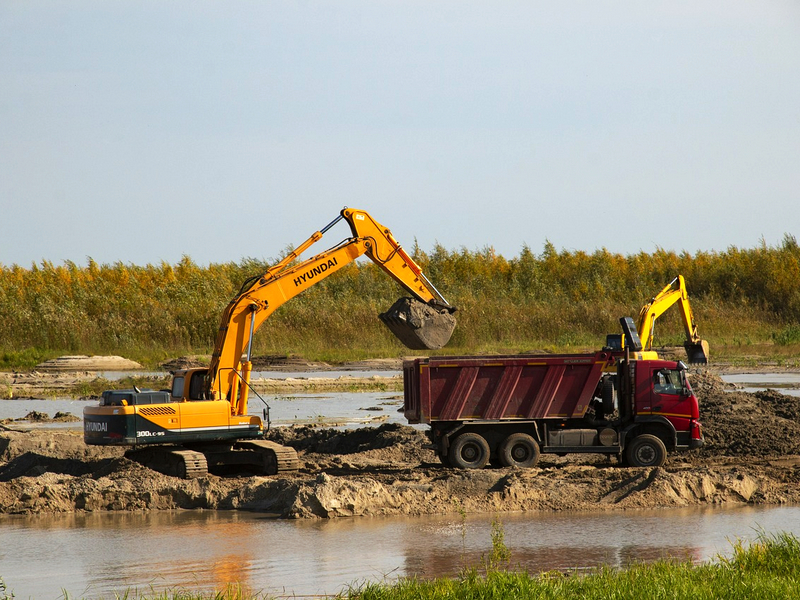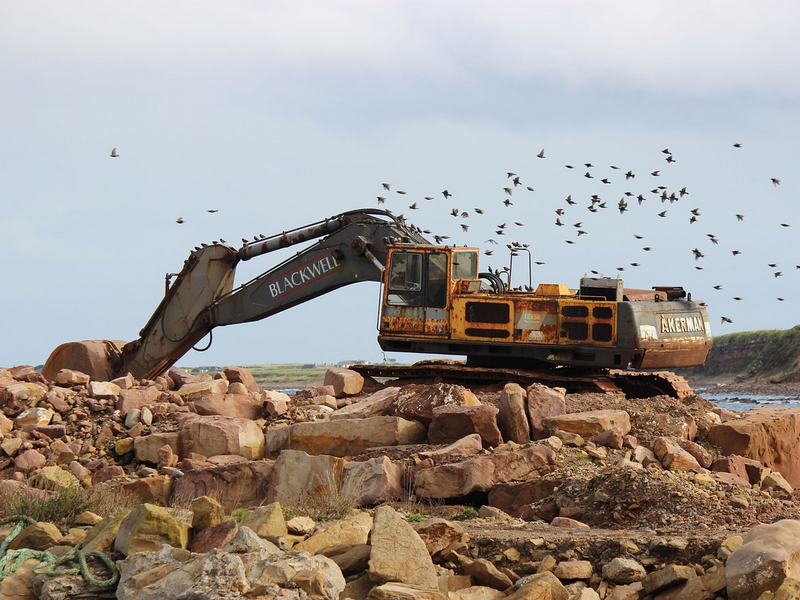The hydraulic cylinder is the core component of
the excavator's working device, and its operating status is directly related to
the smoothness and safety of the equipment's action. Once the cylinder experiences external
or internal leakage, it not only affects work efficiency but may also lead to
significant mechanical damage or safety hazards.

Common types and causes of leakage
External leakage is mainly manifested as oil seepage and leakage on the surface of the cylinder, and the common causes include:
· Seal aging or improper assembly: piston rod seals or end cap seals after long-term pressure and heat aging, hardening, rupture, especially in high-temperature and high-pressure conditions, are more likely to be damaged.
· Piston rod strain or defective welding parts: external bumping, foreign object scratching, corrosion, etc., resulting in uneven rod body, seals can not fit.
· Loose or broken connection piping: cracks in the connection of inlet and outlet oil pipes due to long-term vibration and corrosion.
· Cylinder block or end cap processing
defects: some low-quality cylinder blocks are due to design flaws, poor materials
and micro-seepage phenomenon.
Internal leakage is reflected in the cylinder propulsion, poor action, or incomplete return. The cause is often:
· Damaged or worn piston seals: U-ring, V-ring and other sealing structure failure, hydraulic oil leakage from the large cavity into the small cavity.
· Wear ring loss is serious: resulting in direct friction between the piston and cylinder, which in turn strains the inner wall of the cylinder.
· Impurities into the cylinder: poor
filtration of hydraulic oil, iron filings, sediment and other abrasive materials in the sealing
structure, causing system contamination.
Cylinder damage caused by faulty operation
In actual construction, improper operation often exacerbates cylinder wear and even structural damage. For example:
· Walking without recovering the working device: the digging bucket hits the obstacle, and the piston rod is instantly stressed, resulting in cracking of the cylinder.
· High-frequency crushing or heavy-duty impact: Excessive use of the crushing hammer can subject the cylinder to vibration fatigue.
· Use of cylinder limit stroke operation: retracted to the bottom or extended to the head operation is very easy to form a surge of internal pressure.
· “Rear-end float” operation: although “seemingly effortless”, digging
by floating the body is actually very easy to damage the chassis and the
cylinder system.
Recommendations for routine care and
maintenance
· Clean the piston rod and dust ring area: prevent impurities from being carried into the cylinder with the rod movement.
· Regularly check the tightness of bolts and joints.
· Regularly change the hydraulic oil and filter element to ensure the cleanliness of the oil.
· When the equipment is parked for a long time, keep the piston rod retracted to prevent oxidation and strain.
· Before each operation, carry out a full-stroke running check without load to exhaust air and preheat the oil.
· Pay attention to the temperature of the hydraulic oil to prevent permanent deformation and failure of seals due to high temperature.

Although oil cylinder leakage is common, it
can be completely prevented by scientific operation and systematic maintenance.
Mastering this core knowledge and improving the skill level of operators will
significantly extend the cylinder life, reduce maintenance costs, and bring
more efficient and stable protection for engineering construction.